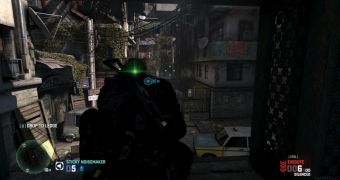Recently, hardware maker Nvidia and publisher Ubisoft announced a long term partnership linked to PC gaming, including titles like Splinter Cell: Blacklist, Assassin’s Creed IV: Black Flag, and Watch Dogs.
We got the chance to spend some time with the new Sam Fisher adventure using a GeForce GTX 780 graphics card and its associated drivers and Geforce Experience program.
The graphics hardware company is interested in making it as easy as possible to play a game using the best possible setting without having to fiddle too much with the settings and to test how the various types of anti-aliasing differ.
The concept is simple but the experience was a little weird when we tried it out, because it requires the player to actually launch and play the game first and then the optimization becomes available, something that was not immediately clear.
After that, Splinter Cell: Blacklist and Nvidia got along great and the power of the GeForce GTX 780 card was plain to see.
Two of its biggest features linked to the new Sam Fisher adventure are TXAA and HBAO+.
The two options are a great asset for a game that depends on light placement and on shadows, because they smooth out the potential jagged edges, even when the player moves, and create a much more believable and immersive game world .
DirectX 11 is also used for tessellation along with a new technology from Professor Bui Tuong Phong to make all surface geometry smoother than in any previous title.
Most gamers might not be interested in the technical details for the above-named features and some of them might even believe that they have little to no impact on the actual Splinter Cell experience.
But their presence and the constant effort from Nvidia to improve them does mean that our gaming time becomes more meaningful with each new hardware generation.

 14 DAY TRIAL //
14 DAY TRIAL //